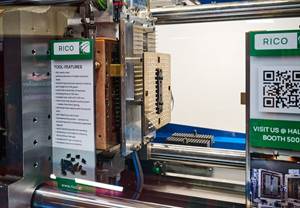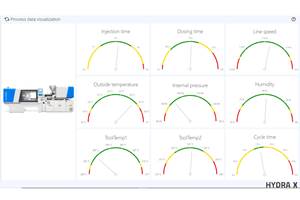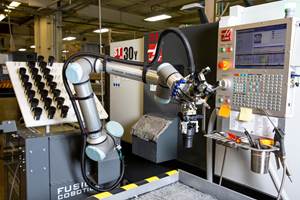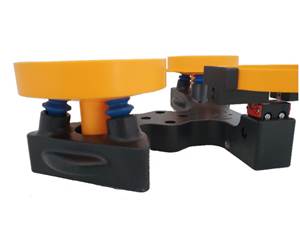Equipment Suppliers Show Adaptability and Smarts at TaipeiPlas 2024
Customizable equipment solutions, warm hand-off support, and seamless software integrations highlight Taiwan’s plastics show.
During the opening ceremony at TaipeiPLAS, held Sept. 24-27 in Taiwan, leaders stressed the importance of equipment manufacturing, not merely for jobs or economic growth but as part of a strategy to be indispensable to the global supply chain. Nearly 500 companies from Taiwan and around the globe made the pitch for the indispensability of their own offerings in Taipei City.
Suppliers demonstrated their capability to help customers make high-performing products, reduce energy consumption, incorporate wider specification materials such as recycled materials, and increase ease of operation. They did so by exhibiting solutions for producing layered products, connected and responsive user interfaces, and highlighting their approach to implementation support.
Multilayering and Microcellular Foaming
Molding machine manufacturer Fu Chun Shin (FCS) used its FB-150C multicomponent machine to make household organizer trays that have an inner core of recycled material and a skin made from virgin resin. Subsequent shots from the machine’s two screws create the skin, core and seal of the product. FCS was also running a machine, the SA-160, to produce safety glasses with the MuCell microcellular foaming technology, which injects supercritical nitrogen into the melt, enabling lightweighting by displacing superfluous plastic. The capability can be added to existing machines as well as delivered with new equipment.

Patrick Yong of FCS explains the implementation of MuCell technology in injection molding, for lightweighting while retaining good properties. Source: Matt Stonecash.
TK Diing Nuen demonstrated blown film extrusion creating 3-layer film for trash bags. According to Ken Wei, the company often recommends a multilayer system even if it is not required for a specific application and the layers are made of the same material. There are two reasons for this, one being the redundancy afforded by having multiple layers of the material and the other being flexibility. Future business opportunities may require multiple layers, so investing in a single layer machine could be self-limiting.
Fong Kee International Machinery (FKI) also manufactured samples in layers, using its all-electric EHB Eblow molding machine to make containers with an internal layer of recycled material. This benefits customers who want to incorporate recycled materials but whose filling product cannot be in direct contact with recycled material, according to Joey Hseih of FKI.
Industry 4.0
Equipment suppliers showcased their solutions for connectivity, highlighting features that make machines easier to use, monitor and troubleshoot. ChumPower demonstrated its Bottle Viewer application in a stretch blow molding machine. The data system displays and transmits information about production, power consumption, air consumption and more to the information system, where it is available on a dashboard accessed by whoever needs it — sales staff needing to know how much product is available, maintenance staff who need to service equipment and more.
Victor Taichung demonstrated injection molding using an electric machine with a PC-based controller that can adjust automatically and reduce testing times. The operator can select a problem, “short shot” for example, and the machine will adjust accordingly.
Multiplas used two machines and a six-axis robot to demonstrate an integrated system that automatically fed regrind back into the system. Because regrind can make production unstable, the system looks for pressure changes and automatically adjusts process parameters accordingly.
Chen Hsong is looking to address the shortage of experienced operators with its own smart control system, exhibited at the show on its SM258VP injection molding system. Part specifications are entered into the computer, and this information is augmented with feedback from the initial shots following startup. According to the company, the parts get to 98% within just the first 10 parts.

Chen Hsong was awarded a TaipeiPLAS Gold award for the SM100EH-LSR machine pictured here, an all-electric liquid silicone rubber injection molding solution. Source: Matt Stonecash.
Molding Simulation and Reality
Moldex3D is expanding its approach beyond the traditional milieu of simulation. “We are working with our customers to bridge the gap between the virtual world and the real world,” says Dr. Venny Yang, Moldex3D CEO. “So we have put a lot of investment into studying that gap.”
Moldex3D is addressing the gap with its iMolding Hub, currently in beta testing, which includes characterization of production machines. “We are automatically including the characteristics of the production machine into the simulation,” Yang says. The iMolding Hub is part of the company’s Moldiverse offerings, which also includes educational tools and the Material Hub Cloud with its database of 9,000 materials and their characteristics.
Yang envisions a closed information loop, incorporating material properties, process characteristics, machine characteristics, and results from past mold designs to ease the path from design to good production. “If you have enough data, for example, you can load in a new design and the system will tell you, based on similar designs, it can make some fundamental suggestions for what the proper molding conditions would be,” Yang says. As time goes on, the system’s predictions should improve based on information gleaned from past designs, including designs that were not selected for any reason.
Right-Sized Solutions
Chuan Lih Fa (CLF) makes the TPII series two platen injection molding machine, which has a footprint 15% shorter than competitive machines. In addition, molds can be loaded from the side, thereby reducing the minimum roof height needed for the machine.
TK Diing Kuen also works with customers to meet space requirements. Depending on customer preferences — and the environmental conditions — the company’s compact machines can be fit into smaller spaces, especially in colder regions where a more open configuration is not necessary to facilitate cooling.
Wittmann exhibited the MicroPower 15 t, for micro injection molding of parts with shot weights from 0.05 to 4 grams. The enclosed cell is adaptable to cleanroom environments, and the injection system features Wittmann’s “drive-on-demand” motor system.
The Warm Handoff
Small and medium-sized companies appreciate hands-on service during equipment activation. Faced with competition in the global marketplace from large manufacturers with very sophisticated, expensive equipment, suppliers from Taiwan see their niche is providing capable equipment at a good price with excellent customer support.
Multiplas, which exhibited its vertical injection molding machine, described itself as more than a supplier, but a production partner to its customers. Ken Wei of TK Ding Kuen, a company that has business in over 110 countries, described the importance of going into customer’s facilities before, during and after installation to ensure success.
Wei says the expanding use of biomaterials and recycled materials has changed how the company serves its customers. “Twenty or 30 years ago, high-density polyethylene, low-density polyethylene, linear: It’s all very simple, but now around the world the material is much too different, so we ask our customers to send us some of their material.”
TK Diing Nuen will test the equipment with the customer’s material to confirm it is working, to facilitate the implementation process. “We want the machine to arrive at the customer and then go directly into earning money quickly,” Wei says.

Attendees, officials and trade organization leaders visit Formosa Chemicals’ circular economy exhibit. Source: Matt Stonecash
Related Content
LSR Advances in Dispensing, Tooling and Automation
At Fakuma 2023, Sumitomo (SHI) Demag’s LSR injection molding machines showcased advances from itself and partners Reinhardt-Technik, Rico and Sepro.
Read MoreManufacturers’ Superpower: ‘X-Ray Vision’ into Your Processes
Meet a ‘new’ name (to North American processors) in MES software, which provides a simple, modular way to achieve visibility into your production operations.
Read MoreFour Industry 4.0 Tech Adoption Insights from Indiana Plastics Manufacturers
As more plastics manufacturers step into the Fourth Industrial Revolution, insights have emerged about how best to approach the digital transformation journey.
Read MoreEnsuring Repeatability: The Key to Effective Injection Molding Automation
One of automation’s key promises is repeatability: the same movement to the same location, time and time again. But to achieve that, all elements involved — robot, machine, EOAT, mold — must be in and stay in alignment.
Read MoreRead Next
Making the Circular Economy a Reality
Driven by brand owner demands and new worldwide legislation, the entire supply chain is working toward the shift to circularity, with some evidence the circular economy has already begun.
Read MorePeople 4.0 – How to Get Buy-In from Your Staff for Industry 4.0 Systems
Implementing a production monitoring system as the foundation of a ‘smart factory’ is about integrating people with new technology as much as it is about integrating machines and computers. Here are tips from a company that has gone through the process.
Read MoreFor PLASTICS' CEO Seaholm, NPE to Shine Light on Sustainability Successes
With advocacy, communication and sustainability as three main pillars, Seaholm leads a trade association to NPE that ‘is more active today than we have ever been.’
Read More















